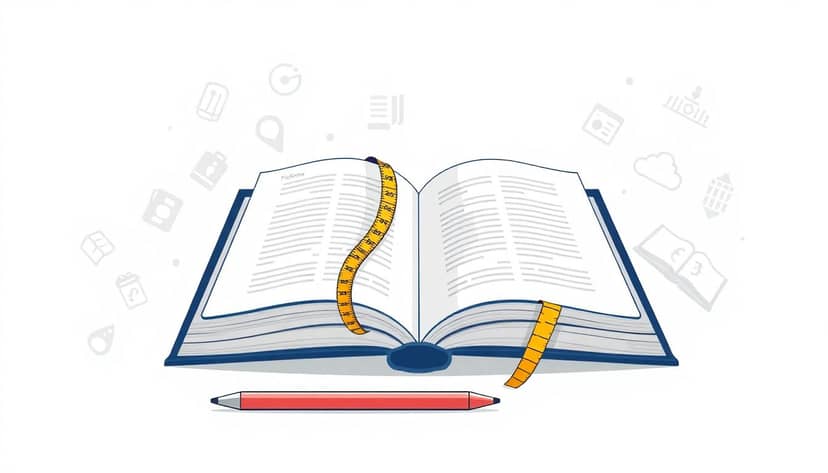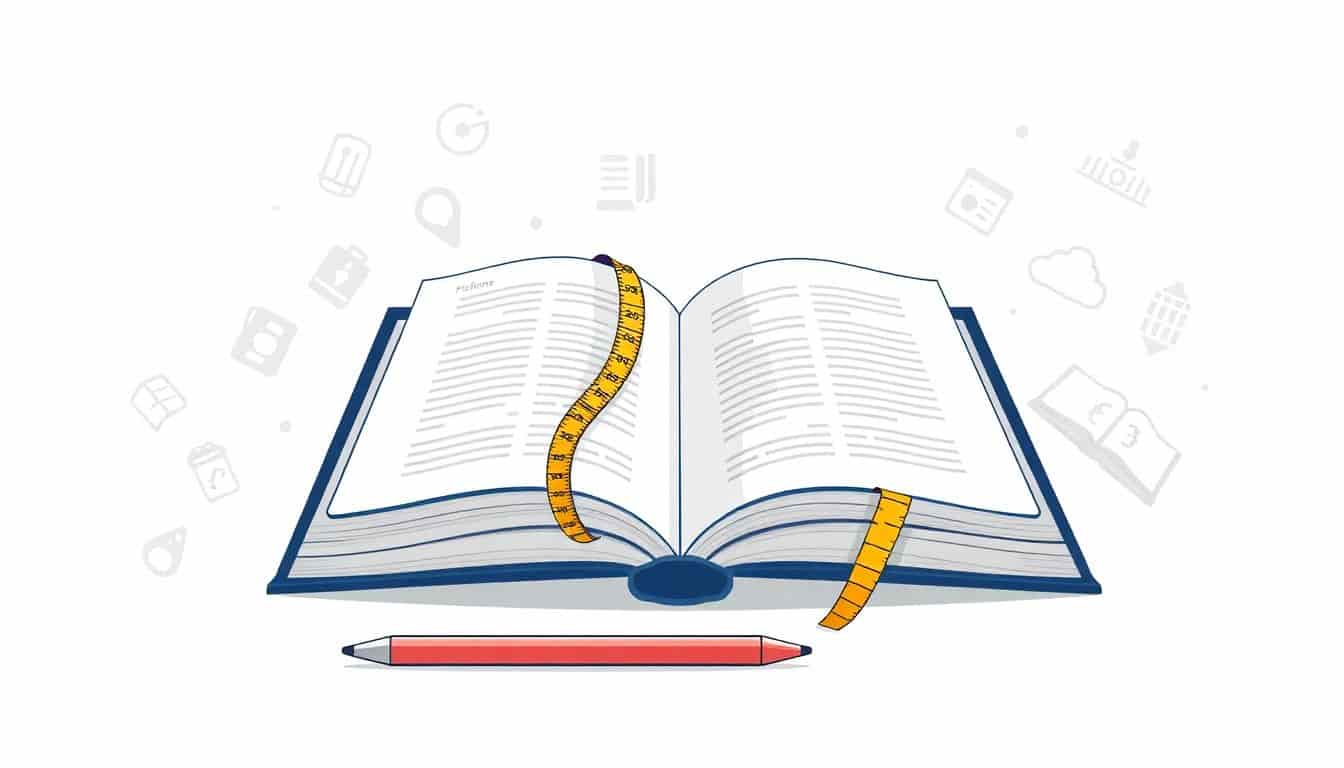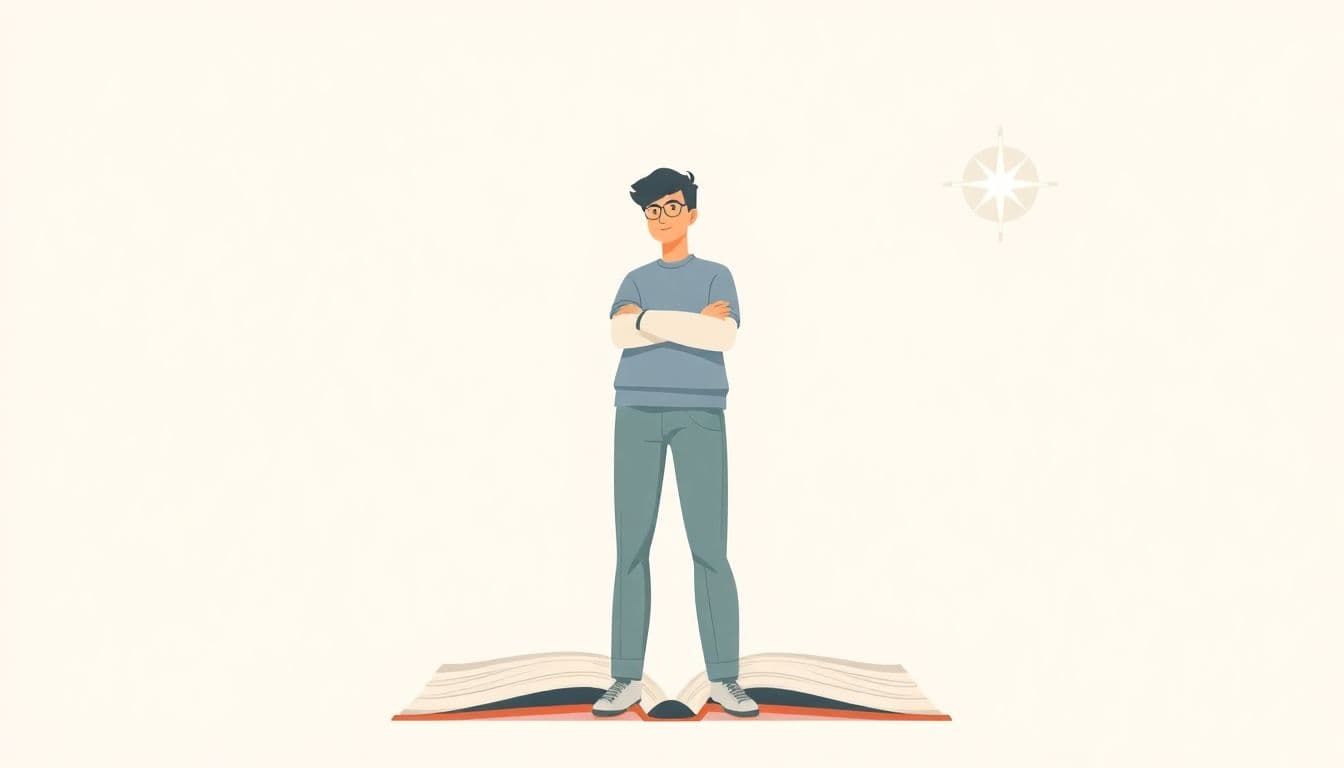Table of Contents
Finding the right book size can feel like a guessing game—pick wrong, and your masterpiece might feel off, or worse, amateurish. You’re not alone; figuring out book dimensions can be a real headache for any writer or publisher.
But here’s some good news: by following a few practical steps, you’ll quickly get a grip on choosing book dimensions. Stick around, and you’ll avoid common blunders and master everything from genre guidelines to printing tricks.
Ready? Let’s jump into it.
Key Takeaways
- Choose book sizes based on your genre: fiction novels work best around 5″x8″ or 5.5″x8.5″, non-fiction commonly at 6″x9″, and illustrated or children’s books at 8.5″x11″ or 9″x12″.
- Trim size means how big pages are after printing, while cover size includes extra space for cutting (“bleed”) and spine width. Check with your printer for exact cover measurements.
- Pick inches if targeting U.S. readers or centimeters for international audiences. Always match your book size to market expectations and standards.
- Your book size affects layout elements like font and images. Larger pages allow bigger fonts and more visual creativity.
- To avoid costly mistakes, confirm your print provider’s standard sizes early and consider how dimensions influence shipping and printing.

Step 1: Choose the Right Book Dimensions by Genre
Choosing the right dimensions for your book is crucial, and it largely depends on your genre. For instance, fiction novels typically use sizes like 5″ x 8″ or 5.5″ x 8.5″, making them comfortable to hold and easy to carry around. On the other hand, a non-fiction book often goes for a slightly larger trim such as 6″ x 9″, since readability and shelf visibility matter more here. And if you’re going for an illustrated children’s book or a coffee-table art book, you’ll usually pick dimensions like 8.5″ x 11″ or 9″ x 12″.
Not sure? Go to a bookstore and grab a few popular books in your genre. Feel their size in your hands and imagine your audience doing the same thing. This real-life exercise gives you a clear sense of what readers actually prefer.
If you’re planning to sell on platforms like Amazon KDP, check their standard sizes too. Print-on-demand services have common trim sizes they recommend, such as 6″ x 9″, and using these dimensions can make your publishing life easier (and often cheaper).
Step 2: Understand the Difference Between Trim Size and Cover Size
Okay, here’s a quick heads-up: trim size is NOT the same thing as the cover size! The trim dimension is basically the measurement of your book pages after they’ve been printed, cut, and bound. On the flip side, cover size is bigger—because it includes the “bleed,” which is extra design space that will be trimmed off, plus the spine width.
A common newbie mistake is designing the cover exactly according to your chosen trim size, without accounting for bleed and spine size—don’t fall into that trap! For example, if your trim size is 6″x9″, your cover could actually measure closer to 6.125″ x 9.25″ depending on your printer’s specifications. Always check with your printing service—they usually have a handy template you can download.
Oh, and remember the spine width will change depending on your paper thickness and page count, so your cover size isn’t set in stone until you finalize those elements. Make sure to nail down manuscript formatting and finalize page count first before commissioning your book cover design.
Step 3: Decide Between Imperial and Metric Measurements
Before you lock in your book size, you’ll have to decide whether you’re working in imperial measurements (like inches) or going metric (like centimeters). In places like the U.S., inches are still the norm, whereas in Europe, Asia, and most parts of the world, centimeters are standard.
Why does this matter? Well, the measurement system you select influences how your book will match up with shelves and reader expectations in your target market. Standard American fiction might use a trim size of 6″ x 9″, which converts roughly to 15.24 cm x 22.86 cm in metric format. If you intend your book to line up nicely alongside classics or best-sellers in bookstores abroad, metric could be your friend.
If you feel stuck thinking about these small details and need inspiration to get your creative juices flowing, check out these helpful winter-themed writing prompts. Finding the right measurement system is all about your intended audience—so look at what’s typical in your target readers’ region before you start layout work.

Step 4: Consider How Book Size Affects Your Design and Layout
The book size you choose directly impacts your layout decisions, like font size, margins, and imagery.
If you go with a compact trim size such as 5.5″ x 8.5″, chances are you’ll use smaller margins and less white space to keep content easily readable.
On the flip side, choosing larger pages (say 7″ x 10″) lets you play around with bigger fonts, spacious margins, and elaborate images or illustrations—perfect for textbooks, manuals, and creative design projects.
Also, remember to pick a comfortable font—here’s a helpful guide on the best fonts for book covers that might inspire your choice.
Pro tip: test your layout first by printing out mock pages at your intended dimensions—this helps avoid surprise readability issues down the line.
Step 5: Plan for Printing and Binding Based on Your Chosen Dimensions
Taking your book dimensions into account right from the beginning will help ensure your finished product comes out exactly as intended without any printing headaches.
Digital printing is booming, valued around 27.3 billion USD in 2022, and expected to grow steadily—giving you plenty of printing choices.
Popular binding types (like perfect bound paperbacks or wire-bound notebooks) each have their own size requirements and quirks.
If you’re aiming for traditional paperbacks in America, standard sizes like 6″ x 9″ and 5.5″ x 8.5″ are common, and many printers have pre-made templates on hand.
Bigger illustrated books might need special binding methods like hardcover casing or spiral binding so the pages lay flat—just know these choices might add to your production cost.
Bottom line: once you select your dimensions, immediately double-check with your printing vendor to ensure they can comfortably accommodate your choice.
Step 6: Review Common Mistakes When Selecting Book Dimensions
Picking your book size in a rush or without careful thought is an easy way to run into avoidable issues later.
A common slip-up: deciding your dimensions without considering how they’ll affect printing costs or reader experience—trust me, readers easily get annoyed if the book feels awkward to hold or the text is cramped.
Another biggie: forgetting to calculate how your page count influences spine width and total book weight.
A really thick spine impacts your cover design layout and might also raise your shipping costs, especially relevant if you plan to distribute your book online.
I’d even recommend checking out this handy guide on paperback versus hardcover formats so you’re crystal clear on format differences.
And please don’t overlook standard sizes for certain platforms like Amazon KDP—using atypical dimensions could limit your distribution choices down the road.
Step 7: Select Book Dimensions That Fit Your Budget and Publishing Goals
Let’s be real—your publishing budget and overall goals should guide your book size selection almost as much as your content does.
Large-format, full-color books like cookbooks, photo collections, or children’s stories usually come at a higher printing cost, so make sure your pricing strategy supports those higher expenses.
According to industry reports, nearly 790 million printed books were sold in the U.S. alone in 2022, meaning there’s a sizeable market—but that doesn’t automatically mean bigger is always better, financially or practically.
If you’re new to publishing and budget is tight, consider smaller, standard dimensions (think 5.5″ x 8.5″) and typical paper choices—this approach tends to cost less both in printing and shipping.
Remember, popular trim sizes typically have better availability, shorter turnaround time, and more affordable pricing from printers, making them a safe bet if you’re just dipping your toes into self-publishing.
Whichever size you end up selecting, carefully run the numbers and decide what will work realistically in your favor.
FAQs
Standard fiction often measures around 5″ x 8″, while nonfiction books are usually around 6″ x 9″. Children’s picture books typically range larger, near 8.5″ x 11″. Selecting the typical size for your genre helps meet reader expectations and simplifies bookstore placement.
Trim size refers to the dimensions of the interior pages after cutting. Cover size includes the trim size plus additional space for the book’s spine thickness, front, and back cover bleed. Cover size is larger to properly wrap around the book.
Imperial measurements (inches) are standard in North America, while metric (millimeters or centimeters) formats are common internationally. Choose measurements based on your primary target market and the location of your print supplier to ease the production process.
Larger books typically cost more due to increased paper, printing, and shipping expenses. Book size also affects design layouts, requiring adjustments in margins, spacing, images, and font size to ensure clarity and readability.



